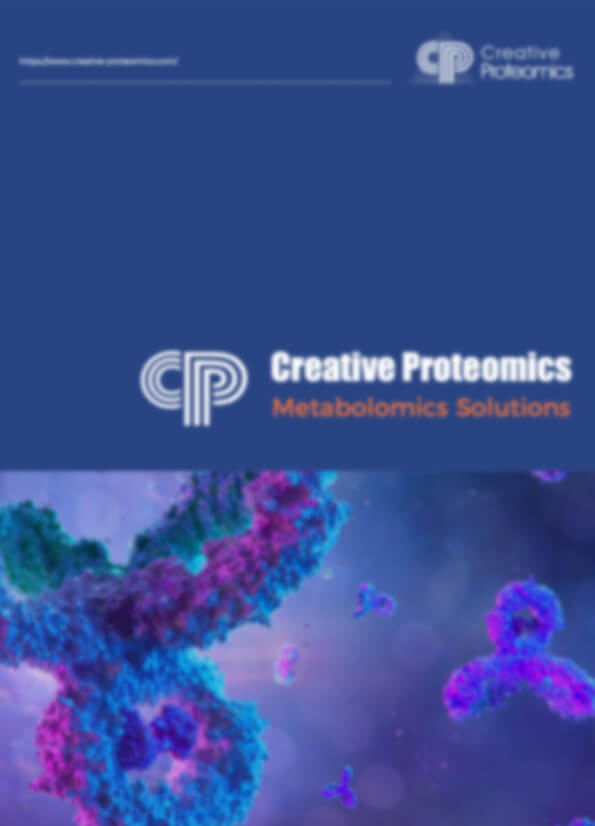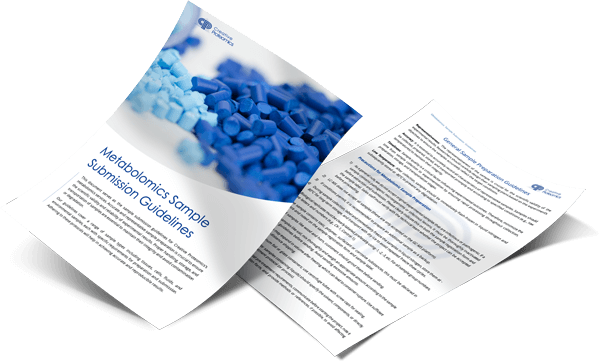TCA Cycle Analysis Service
Creative Proteomics offers comprehensive metabolomics services designed to unlock the full potential of your biological samples. For your carbon metabolism research, Creative Proteomics provides advanced TCA Cycle Analysis Service. This service precisely quantifies key metabolites and enzymes in the tricarboxylic acid cycle, enhancing your research in metabolism, cancer, neurodegeneration, and other related fields.
Submit Your Request Now
×- What is
- Our Service
- Instruments
- Applications
- Sample Requirements
- Our Advantages
- FAQs
- Case Study
- Publications
What is TCA Cycle?
Tricarboxylic Acid Cycle (TCA Cycle), also known as citric acid cycle or Krebs cycle, is a key pathway in central carbon metabolism and involves eight enzyme-catalyzed reactions. By converting acetyl-CoA into carbon dioxide and water, ATP and NADH are produced. It is carried out in the mitochondrial matrix of cells and is an important part of cell energy production. TCA cycle connects the metabolism of carbohydrates, lipids, and amino acids, tightly coordinated with OXPHOS and it is the final metabolic pathway of the three major nutrients.
 Figure 1. Tricarboxylic acid (TCA) cycle.
Figure 1. Tricarboxylic acid (TCA) cycle.
TCA Cycle Analysis Service at Creative Proteomic
To determine the concentrations of metabolites of TCA, LC-MS/MS is used for central carbon metabolism analysis. The current panels we provide are listed below. Have specific metabolite requirements? Our panels can be fully customized based on your unique needs, simply submit a request.
| TCA Cycle Analysis in This Service | ||
|---|---|---|
| Acetyl-CoA | α-Ketoglutaric acid | ADP |
| AMP | ATP | cAMP |
| Citric acid | DL-α-OH-glutaric acid | Erythrose-4-P |
| Fumaric acid | GDP | GTP |
| Glycolic acid | Isocitric acid | Lactic acid |
| Malic acid | Malonyl-CoA | Succinyl-CoA |
| Mannose-6-P | NAD+ | NADH |
| NADP+ | NADPH | Oxaloacetate |
| Phosphoenolpyruvate (PEP) | Pyruvic acid | Ribose-5-P |
| Ribulose-5P | Sedoheptulose-7P | Succinic acid |
| UDP-glucose | UDP | |
Instruments Used for TCA Cycle Analysis

What TCA Cycle Analysis Can Help?
1. Tumor heterogeneity
Studying differences in TCA cycle activity across different tumor types, and even within different cell subpopulations within the same tumor (e.g., cancer stem cells), which is closely related to proliferation, invasion, and drug resistance.
2. Nutrient flexibility
Cancer cells can utilize not only glucose but also glutamine, fatty acids, and other nutrients as "fuel" to replenish the TCA cycle. Analyzing the sources of TCA intermediates (e.g., α-ketoglutarate and oxaloacetate) reveals how cancer cells "hijack" other nutrients for survival and proliferation.
3. Autoimmune inflammation
Study how metabolites such as succinate and itaconate (derived from TCA cycle intermediates) act as signaling molecules in macrophages to regulate inflammasome activation and cytokine release, and participate in diseases such as rheumatoid arthritis.
Sample Requirements of TCA Cycle Analysis
| Sample type | Minimum amount |
|---|---|
| Animal and clinical tissue samples | 100 mg |
| Blood samples (serum, plasma and whole blood) | 100 µL |
| DBS | 100 µL |
| Urine samples | 1 mL |
| Stool and intestinal contents | 100 mg |
| Body fluid samples (cerebrospinal fluid, saliva, etc.) | 200 µL |
| Plant tissue samples (roots, stems, leaves flowers and fruits, etc.) | 200 mg |
| Cells and microbial organisms | 2×107 |
| Culture media and fermentation broth | 500 µL |
Our Advantages on TCA Cycle Analysis
1. Accurate qualitative and quantitative analysis
Dual verification using standard samples and isotopic internal standards provides accurate metabolite quantitative data. Strictly follow the gold standard of absolute quantification.
2. Highly reproducible
Strict internal quality control (QC) system and standard curves ensure the stability and reproducibility of data within and between batches.
3. Perform fine-grained cell analysis
Enables metabolic analysis of specific cell populations obtained by flow sorting or laser capture microdissection (LCM).
4. Reveal key nodes
We not only tell you which metabolites have changed, but also tell you which pathway is activated or inhibited, and which enzyme may be the key regulatory point.
FAQs
Why TCA cycle metabolites are selected as research targets?
As the core hub of cellular energy metabolism, changes in metabolite levels directly reflect mitochondrial function, oxidative stress status, and metabolic reprogramming in cancer and neurodegenerative diseases. By quantifying metabolites of TCA cycle (such as citrate, α-ketoglutarate, succinate, etc.), energy metabolism abnormalities, signal pathway regulation, and drug action mechanisms can be revealed.
What are the technical difficulties in analyzing metabolites of TCA cycle by LC-MS/MS?
Difficulty in retaining polar metabolites: Use hydrophilic interaction chromatography (HILIC) columns to improve the separation of polar substances such as citric acid and isocitric acid.
Differentiation of isomers: Isocitric acid and citric acid need to be separated by optimizing the chromatographic gradient or combining ion mobility mass spectrometry.
Detection of low-abundance metabolites: Use negative ion mode (ESI−) and multiple reaction monitoring (MRM) to improve sensitivity.
Are other metabolic pathways required to be analyzed simultaneously?
The following pathway analyses should be combined in order to obtain a comprehensive understanding of metabolic phenotype:
Glycolysis: lactate, pyruvate (reflecting the Warburg effect).
Amino acid metabolism: glutamine, aspartate (related to TCA cycle refilling reaction).
Oxidative phosphorylation: ATP/ADP ratio (to evaluate mitochondrial function).
Learn about other Q&A about other technologies.
TCA Cycle Analysis Case Study
Publications
Here are some publications in Metabolomics research from our clients:

- Bacterial–fungal interactions revealed by genome-wide analysis of bacterial mutant fitness. 2021. https://doi.org/10.1038/s41564-020-00800-z
- A comprehensive biochemical characterization of settlement stage leptocephalus larvae of bonefish (Albula vulpes). 2021. https://doi.org/10.1111/jfb.14846
- The Brain Metabolome Is Modified by Obesity in a Sex-Dependent Manner. 2024. https://doi.org/10.3390/ijms25063475
- Comparative metabolite profiling of salt sensitive Oryza sativa and the halophytic wild rice Oryza coarctata under salt stress. 2024. https://doi.org/10.1002/pei3.10155
- Characterization of CYCLOPHILLIN38 shows that a photosynthesis-derived systemic signal controls lateral root emergence. 2021. https://doi.org/10.1093/plphys/kiaa032









